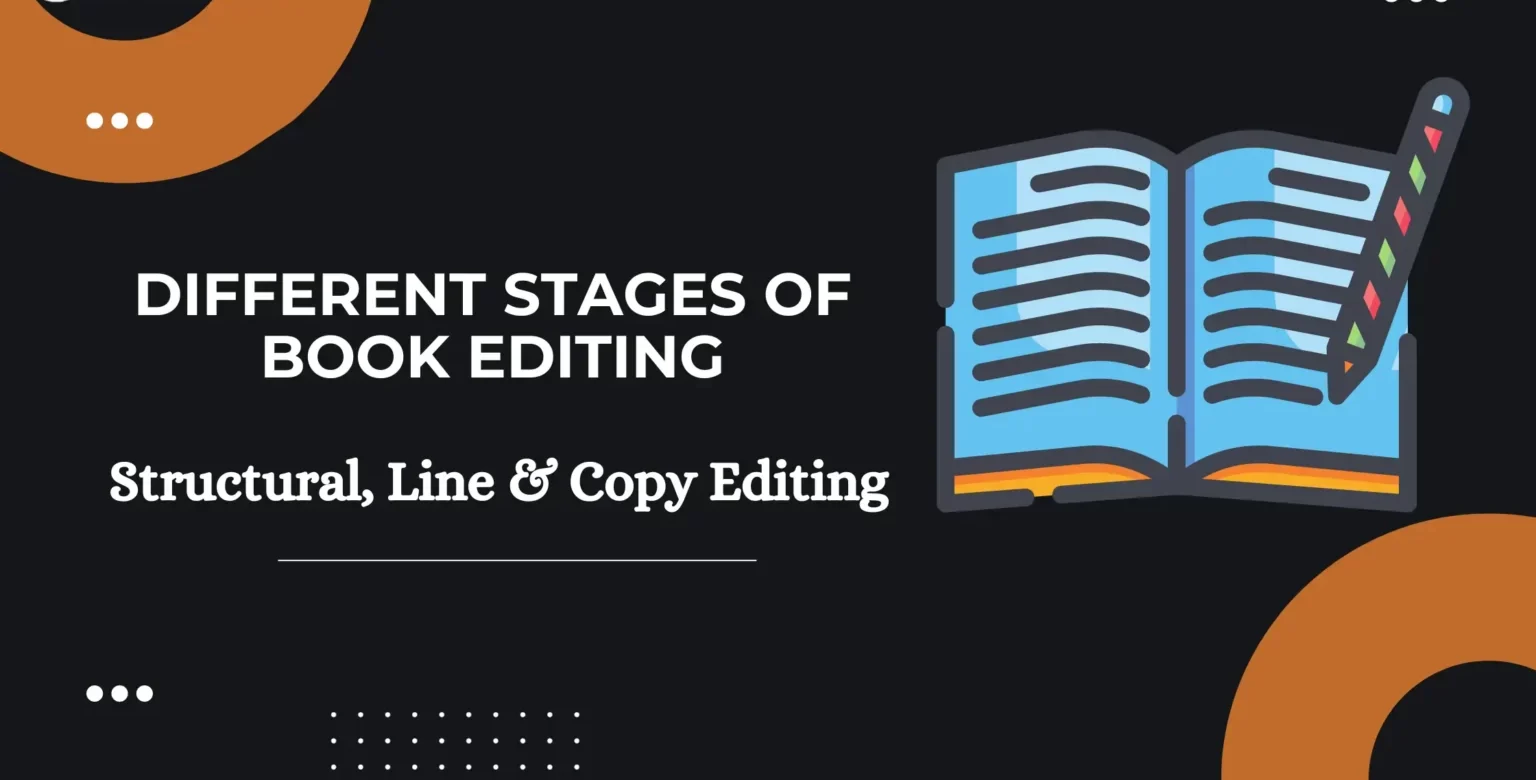- Blog
The Different Stages of Book Editing: Structural, Line, and Copyediting

At its core, book editing is the magical process of refining a manuscript, much like a sculptor carves imperfections to create a masterpiece. So it is with editors who work behind the scenes to bring the author’s creation to its full potential
Why does Editing Play a Pivotal Role?
You wrote an amazing story or a book, but without editing, it’s like a diamond in the rough waiting to sparkle. Editing polishes the prose, smooths out the bumps, and ensures your readers get an immersive, delightful experience. It’s the VIP treatment your manuscript deserves.
Here’s everything we will go over about the different stages of book editing and how it makes stories truly shine.
Exploring different Stages of Book Editing
You want to know how to become a copy editor for books, but do you know there are also other types and stages of the editing process? Not knowing about different levels of editing will keep you hanging out for a long time. As we have already scratched the surface of book editing, it’s time to put different types of editing in the spotlight.
- Developmental or structural editing
- Line Editing
- Copy Editing
- Proofreading
Let’s explore this in detail, beginning with the first step in the editing process.
| Types of Editing | Structural Editing | Line Editing | Copy Editing | Proofreading |
| Focus | Big-picture elements such as plot, character development, pacing, and overall structure. | Improving the writing at the sentence and paragraph level. | Correcting grammar, punctuation, and consistency issues. | Identifying and correcting surface errors. |
| Goals | Ensures the manuscript has a strong foundation and engages readers effectively. | Polishing the prose for style, tone, and clarity. | Ensures adherence to style guides and grammatical correctness. | Ensures a polished, error-free manuscript. |
| Activities | Assessing plot coherence, character consistency, pacing adjustments, and evaluating overall narrative flow. | Enhancing sentence structure, addressing word choice, and refining the author’s voice. | Fixing spelling and grammar errors, ensuring consistent language use, and checking for clarity. | Reviewing for typos, spelling mistakes, punctuation errors, and minor formatting issues. |
1. Developmental or Structural Editing
Let’s begin by explaining what structural editing is in book writing. Think of structural editing as being the boss of building a story. It’s like having a plan for the whole picture.
- Structural editors have the big ideas,
- Shapes the story’s plot,
- Ensures everything fits together,
- And make characters come alive.
Like an architect starts a big building by creating a solid base, structural editing ensures the story has a good foundation. And this way, when people read it, the narrative stays strong and keeps their interest.
Can I Do Structural Editing on My Own?
If you’re wondering if you can do structural editing on your own or not, the answer is absolutely! Tackling structural editing on your own is a doable venture, especially if you’re up for the challenge. Here are some steps and tips to guide you through the process:
Remember, while self-structural editing is a commendable effort, it’s also beneficial to consider professional editors for a comprehensive review. They bring a fresh, experienced eye to your work, ensuring it reaches its full potential.
2. Line Editing
What is a line edit?
A line edit is like the fine-tuning phase in the editing world. It goes beyond the big-picture issues addressed in structural editing and focuses on the nitty-gritty details of your writing. During a line edit, each sentence is scrutinized to enhance clarity, flow, and overall readability.
It’s about polishing your prose, fixing awkward phrasing, and ensuring that every word serves a purpose. Think of it as giving your writing a sleek makeover, refining it to shine at the sentence level.
3. Copy Editing
If you’re wondering what does a copy editor do, here’s what you need to know:
Think of copy editors as the keepers of the writing rules. They ensure every sentence follows grammar rules, punctuation is in the right spots, and the writing style stays the same. It’s like taking care of an art gallery, where every piece is looked after to keep it polished and looking its best. You can solely become a copy editor too, wondering how? We tell you:
How to Become a Copy Editor?
Apart from book writing, copy editing is an entirely different skill. To become a copy editor, individuals can follow these 10 essential steps to become a copy editor:
Aspiring copy editors can acquire the abilities and know-how required for a prosperous career in the industry by following these ten steps.
4. Proofreading
Proofreading is the last line of defense. Imagine a careful explorer going through every part of the writing to find any mistakes or errors. In this, the editor is like a watchful guard, checking every nook and cranny for imperfections. Finally, proofreading ensures that the ebook writing is flawless and ready to be shared with the world. One question that, as an author, crosses your mind very often is:
Can I Proofread My Own Book?
Of course, you can proofread your book on your own, but it requires technical skills and a significant amount of time to complete. If you are not skilled enough, you may need to hire a professional book proofreading service to help you. Fortunately, book publishers also offer this service for authors.
Don’t be discouraged if you want to try proofreading your own book! It’s a commendable effort that can be quite effective if approached correctly. If you decide to do it, here are some tips to help you:
o, roll up your sleeves, grab a cup of coffee, and tackle that proofreading like a boss. You got this! And remember, if you ever feel like you need a pro touch, there are always professional proofreaders ready to jump in.
In Which Order should I apply These Levels of Book Editing?
Each level of editing contributes to the refinement and improvement of the manuscript. The order in which these levels are applied may vary, and some projects may skip certain levels depending on the needs of the manuscript and the author’s preferences. It’s common for the editing process to involve a combination of these levels to achieve a well-crafted final product.
When Should I Hire an Editor?
Wondering when to call in the editing expert? I totally get it! Here are some cues to help you figure out when it’s the right time to bring in a professional editor
- After that writing sprint to the finish line, when your fingers are practically begging for a break, it’s a great moment. Give your manuscript a breather, then let an editor take the reins
- When your trusted beta readers give you the side-eye or drop hints about confusing plot twists, it’s editor o’clock. They’ll untangle the mystery and make your story a smooth read.
- If you’re stuck in a never-ending loop of rewriting, it might be time for an editor’s intervention. They bring clarity and direction, like a GPS.
- If commas and semicolons are your writing enemies, an editor is your grammar superhero. They’ll make sure your sentences are as clear as a mountain stream.
- Dreaming of traditional publishing? Editors are your secret weapon. They know what publishers crave and can polish your manuscript to shine in the query spotlight.
- If your eyes have become too familiar with your manuscript, it’s emergency editor time. Fresh eyes catch things you might have missed, like the plot twist you forgot to reveal.
- If you want someone to be honest—the kind of honesty your friends might sugarcoat—hire an editor. They’ll be your tough-love coach, pushing you to be your best.
Remember, there’s no perfect moment. Whenever you feel like your manuscript could use a little extra sparkle, that’s the right time to bring in an editor. They’re like writing superheroes, ready to make your words shine.
Conclusion: Different Stages of Book Editing
Summing it up, the journey from a raw draft to a polished book involves these different stages of book editing:
Structural Editing: Building a strong foundation by fixing the plot and story flow.
Line Editing: Zooming in on sentences, ensuring clarity and captivation.
Copyediting: Polishing grammar and maintaining consistency in style.
Proofreading: Reviewing for typos, spelling mistakes, punctuation errors, and addressing minor formatting issues.
Your manuscript’s evolution from a draft to a masterpiece involves climbing these literary peaks. Each stage is a step closer to the summit of a compelling and polished book. Editing might feel like climbing a mountain, but remember; each stage gets you closer to that literary summit.

We are an expert ghostwriting team that takes your imagination, adds a thing or two, and turns it into a successful book.